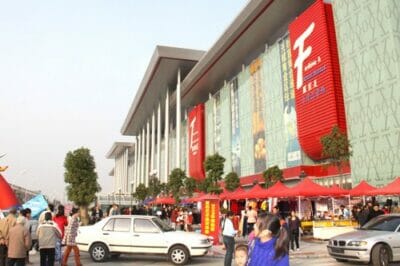
China South City’s flagship mall in Shenzhen
While sales may be down at some of China’s luxury retail palaces, a developer of “wholesale malls” backed by one of the country’s biggest Internet companies has big plans for expansion.
Hong Kong-listed China South City Holdings, which builds and operates wholesale trading centres is planning to build two new malls per year, to add to its eight existing centres, according to a report today by the Wall Street Journal.
China South City, which was founded in 2002 told the Journal that it plans to buy land for a ninth centre in Guangzhou by early next year, and hopes to invest capital of about US$2.06 billion during the next fiscal year.
China South City Benefits from Tencent Partnership
At least part of the funds for this expansion come from some recent investment by Shenzhen-based Internet firm Tencent, which also produces China’s phenomenally popular WeChat mobile messaging app.
In September China South City informed the Hong Kong stock exchange that Tencent was investing another HK$822.6 million ($106.1 million) into the mall developer through a private share offering. The share purchase by Tencent raised its stake in China South City to 11.55 percent.
As part of the partnership between the two companies, China South City will integrate its ecommerce service into Tencent’s WeChat messaging app. The integration would allow customers to pay for purchases at the mall through WeChat’s online payment feature, and would also enable the application to push promotional messages at shoppers and track the movement of users through the mall.
Building Suburban Trade Centres
While commonly referred to as malls, China South City’s projects may look unusual to shoppers expecting brilliant displays and exclusive boutiques. The Shenzhen-based company’s centres operate as integrated logistics and trade hubs where wholesalers can consolidate their businesses in areas away from China’s increasingly crowded – and expensive – city centres.
The trading complexes combine business facilities such as space for wholesale outlets, warehouses and bank branches with “lifestyle amenities” such as restaurants and hotels. According to the company’s management, the trading centres were originally inspired by wholesale market for commodities that are common around train stations and bus terminals across China.
Leave a Reply